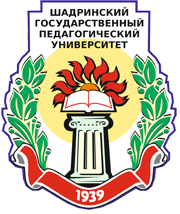Женщина Нового времени (история портретов первого выпуска Смольного института благородных девиц в Санкт-Петербурге)
The New Age woman (history of pupils’ portraits of the Smolny Institute in Saint-Petersburg)
Аннотация
В статье рассматривается серия портретов воспитанниц Смольного института благородных девиц работы художника Д.Г. Левицкого. Данная серия отразила принципы эпохи Просвещения в сфере женского воспитания в России. Смольный институт был создан императрицей Екатериной II как место для внедрения инноваций. В рамках воспитания «нового человека» ставилась задача создать «женщину нового времени». Д.Г. Левицкий (мастер парадного портрета XVIII века) раскрыл образы смолянок при помощи технических средств живописи того времени. В статье прослеживается отражение основополагающих характеристик периода второй половины XVIII века в портретах и биографиях портретируемых девушек: сочетание классицистического Просвещения и фривольного рококо. В портретах воспитанниц Смольного института благородных девиц выражены черты характера девушек дворянского сословия, оказавшихся в культурной ситуации трансформации современного им российского общества.
Abstract: The article examines a series of pupils’ portraits of the Smolny Institute of Noble Maidens by the artist D.G. Levitsky. This series reflected the principles of the Enlightenment in the field of women's education in Russia. The Smolny Institute was created by Empress Catherine II as a place for pedagogical innovations. As part of the education of the "homo novus" the goal was to create a "woman of the new time." D.G. Levitsky (master of the 18th century ceremonial portrait) revealed the images of tars using the technical means of painting at that time. The article traces the fundamental characteristics of the period of the second half of the 18th century in the portraits and biographies of the portrayed girls: a combination of the classic Enlightenment and the frivolous rococo. In the portraits of the Smolny Institute pupils expressed of the noble class girls’ character traits, caught in the cultural situation of the transformation of modern Russian society.






